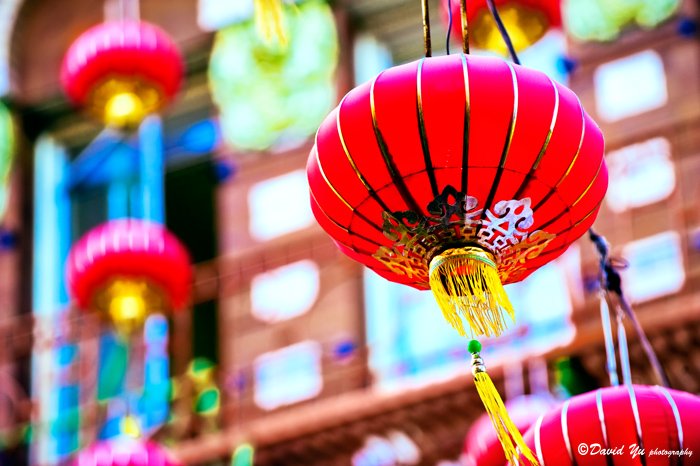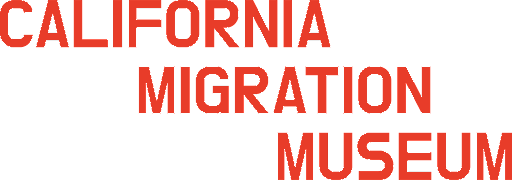
From Guangzhou to San Francisco and Beyond: The Chinese City Beautiful Movement of San Francisco
Chinatown: Lesson 2
The Development of Chinese Style Architecture in San Francisco and the Chinese City Beautiful Movement
Topic
1. Understand the centrality and importance of San Francisco's Chinatown.
2. Explore how communities develop through migration.
3. Learn about cultural diffusion through San Francisco's City Beautiful Movement.
Objectives
9th to 12th Human Geography, World, and U.S. History
On level through Advanced Placement and the International Baccalaureate
Grade
How does architecture convey a communities' culture and how does it shift or change as groups migrate to new areas?
Essential Question
Overview
The basis of this lesson relates to information found in Scene 1: Something In Between, Scene 3:
The Longest 60 Seconds, Scene 4: Chinese Beautiful is Born, Scene 5: Look Up, Scene 6: Fighting Back, Scene 7: Twin Towers from the CMM Chinatown Walk. This lesson plan leads students through the cultural diffusion of Chinese Architecture from the Guangzhou Province to San Francisco, as the oldest and largest outside of Asia, and its influence in other Chinatowns in the U.S., Australia, Canada, and Europe.
While Chinatowns developed outside of China along the trade routes traveled by Zheng He from 1105 to 1433 in Asia, they began in the West in the 19 century. As one of the oldest, the largest in North America and arguably the most famous, San Francisco's Chinatown, founded mainly by migrants from Guangzhou province in the wake of the Gold Rush in 1819, enjoys an outsized influence on other Chinatowns and in popular culture.
After the 1906 earthquake plans were drawn up by the Relocation Committee to move the Chinese population out of the perceived dangerous, but away from the centrally located, Chinatown location near the lucrative San Francisco waterfront to industrial Hunter's Point.
Under the auspices of Mayor Edward Robeson Taylor, Daniel Burnham, the central architect of the nationwide City Beautiful Movement, was hired to redesign the earthquake ravaged Chinatown after the Chinese population were moved to the outskirts of San Francisco under the Relocation Committees plan. Hoping to forestall the relocation, Chinatown resident and entrepreneur Look Tin Eli launched the Chinese Beautiful Movement to rebuild Chinatown in such a way as to incorporate Chinatown into San Francisco while maintaining their community identity.
Trademark Pagoda Tower, Grant Avenue, San Francisco - circa 1910
Materials
Students will need a pen, paper, computer, and access to wi-fi for Google Earth.
Key Ideas
City Beautiful Movement, Cultural Diffusion, Cultural Blending
Assessment
Students will create an exhibition of Chinese City Beautiful Architecture.
"Greater San Francisco may well be proud of its new Chinatown.. for it is the one distinguishing mark which programs her different from any other great city in the whole civilized world. And the Chinese residents of the city are certainly deserving of unstinted praise for the pluck and courage they have shown in the rehabilitation of their particular quarter, which the united press of San Francisco declared could never be resuscitated." - Look Tin Eli (1910)
Look Tin Eli, Our New Oriental City: Veritable fairy palaces filled with the choicest treasures of the Orient. San Francisco: The Metrobols of the West (San Francisco: Western Press Association. 1910) 90-93.
Lesson (75 Minutes Total):
-
Write the Look Tin Eli quote (below) and have students read it before looking at the image of Grant and California Streets contrasting Old Saint Mary's Cathedral and the Singchong Building.
Student Question: What do you notice about the picture?
Note: This can be done individually, in pairs or as a teacher led class activity.
-
Students will read and discuss Look Tin Eli's brief chapter (4 pages with images) "Our New Oriental City-Veritable Fairy Palaces Filled with the Choicest Treasures of the Orient" from the book San Francisco: the Metropolis of the West available free from the Internet Archive.
Discussion Questions:
1. How does Look Tin Eli describe the "new" Chinatown?
2. How does Look Tin Eli separate San Francisco’s Chinatown from other Asian Cities?
3. What resources does Look Tin Eli think the Chinese population already possess and add to the city of San Francisco?
4. Why would these attributes appeal to San Francisco readers and its business community?
5. How do the images covey both Chinese and American ideals of buildings?
Note: The questions can be answered individually on paper, in pairs for discussion or as part of a larger class discussion. Ideally students will already be familar with the City Beautiful Movement as part of the U.S. History framework, otherwise teachers may want to include a very brief description of the movement before beginning the activity.
-
Utilizing Google Earth or Google Maps, students will first explore the Guangxiao Temple, the oldest Buddhist Temple in Guangzhou the capital of Guangzhou province. Students should then briefly review the original image from the opening activity and the drawings in Look Tin Eli's article. Next students will explore the Chinatowns of Melbourne (Australia), London (England), Vancouver (Canada), and New York City (United States) and find buildings from each city which they could argue comes from the Chinese Beautiful Movement. They will need to take a screenshot of each building they choose and create a brief explanation for their choice being sure to relate the building to one from Look Tin Eli's chapter.
Note: Students can work individually or in groups of two to three. The assessment can be in the form of a google doc, Canva, or other format which fits the norms of the class environment. Students should also wait to begin until Google Earth has fully loaded, and in case of delay students can switch to Google Maps.
-
Using the images from the article "Long-Awaited Muni Central Subway Opens With Grand Celebration at New Chinatown-Rose Park Station". Students need to briefly in three to five sentences explain how the new station represents the intentions and goals of Look Tin Eli and the Chinese Beautiful Movement.
Notes: The Exit Ticket can be turned in on a piece of paper or notecard as per classroom norms.
Standards:
Historical and Social Science Analysis Skills (p727-728)
-
Students compare the present with the past, evaluating the consequences of past events and decisions and determining the lessons that were learned.
Students analyze how change happens at different times; understand that some aspects can change while others remain the same; and understand that change is complicated and affects not only technology and politics but also values and beliefs.
Students use a variety of maps and documents to interpret human movement, including major patterns of domestic and international migration, changing environmental preferences and settlement patterns, the frictions that develop between population groups, and the diffusion of ideas, technological innovations, and goods.
Students relate current events to the physical and human characteristics of places and regions.
-
Students identify bias and prejudice in historical interpretations.
Students construct and test hypotheses; collect, evaluate, and employ information for multiple primary and secondary sources; and apply it in oral and written presentations.
-
Students show the connections, casual and otherwise, between particular historical events and larger social, economic, and political trends and developments.
Students recognize the complexity of historical causes and effects, including the limitations on determining cause and effect.
Students interpret past events and issues within the context in which an event unfolded rather than soley in terms of present day norms and values.
Students understand the meaning, implication. and impact of historical events and recognize that events could have taken other directions.
Students analyze human modifications of landscapes and examine the resulting environmental policy issues.
-
10.4 Students analyze patterns of global change in the era of New Imperialism in at least two of the following regions or countries: Atrica, Southeast Asia, China, India, Latin America, and the Philippines.
Describe the rise of industrial economies and their link to imperialism and colonialism (e.g., the role played by national security and strategic advantage; moral issues raised by the search for national hegemony, Social Darwinism, and the missionary impulse; material issues such as land, resources, and technology).
Explain imperialism from the perspective of the colonizers and the colonized and the varied immediate and long-term responses by the people under colonial rule.
-
11.2 Students analyze the relationship among the rise of industrialization, large scale rural-to-urban migration. and massive immigration from Southern and Eastern Europe.
2. Describe the changing landscape, including the growth of cities linked by industry and trade and the development of cities divided according to race ethnicity and class.
6. Trace the economic development of the United States and its emergence as a major industrial power. including its gains from trade and the advantages of its physical geography.
11.4 Students trace the rise of the United States to its role as a world power in the twentieth century.
1. List the purpose and the effects of the Open Door Policy.
11.5 Students analyze the major political, social, economic, technological, and cultural developments of the 1920s.
4. Discuss the rise of mass production techniques, the growth of cities, the impact of new technologies (e.g., the automobile, electricity), and the resulting prosperity and effect on the American landscape.


